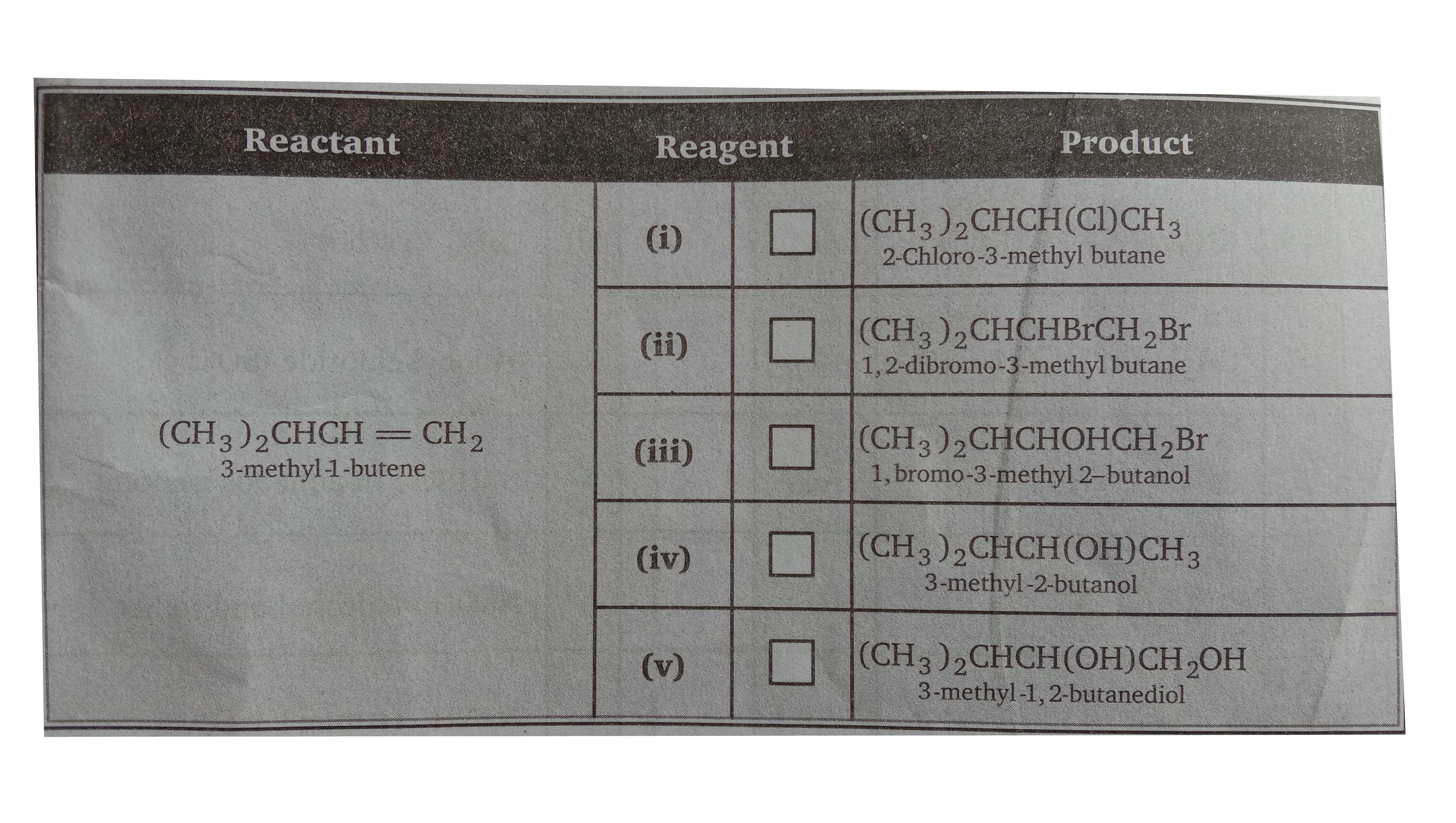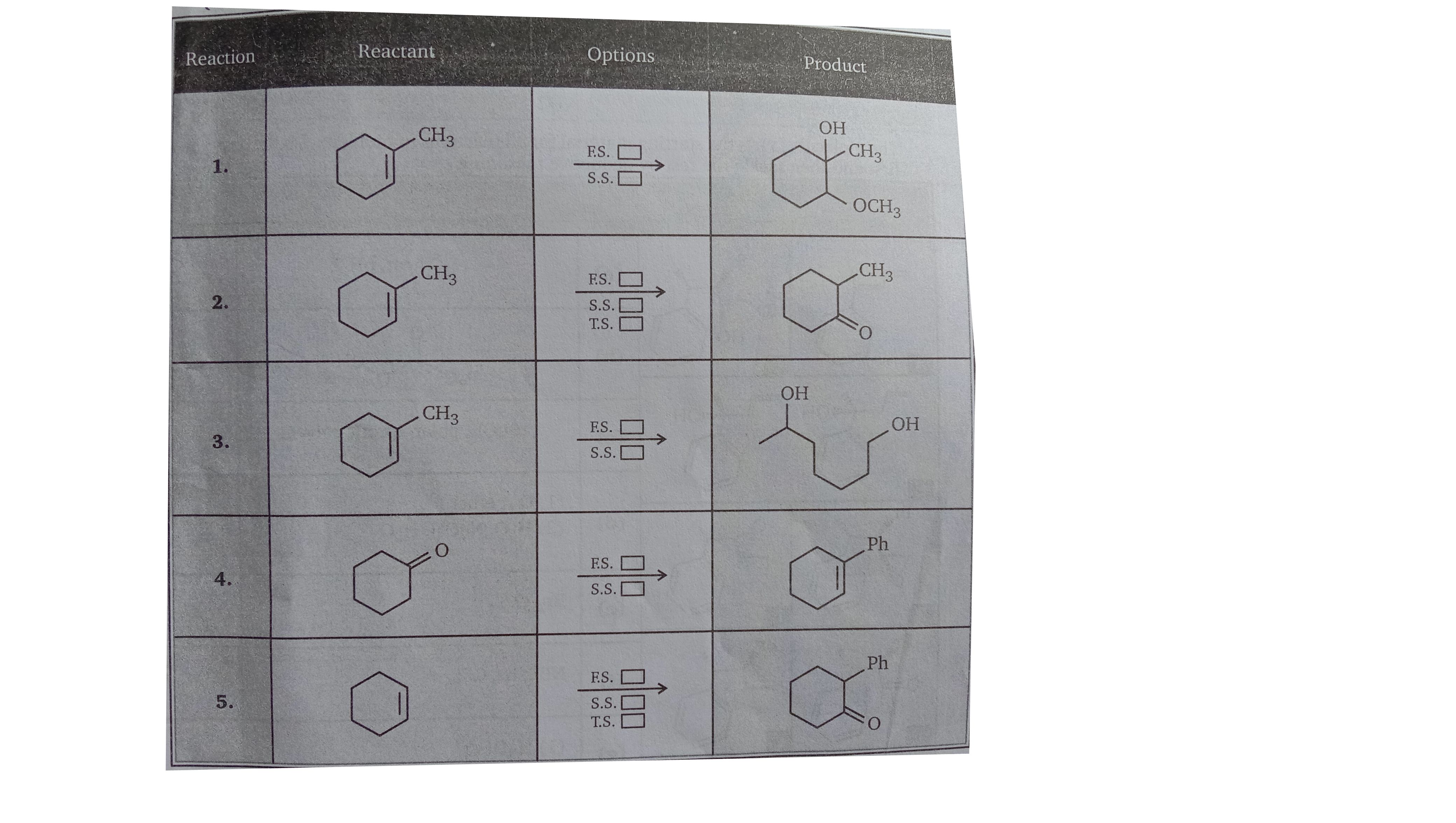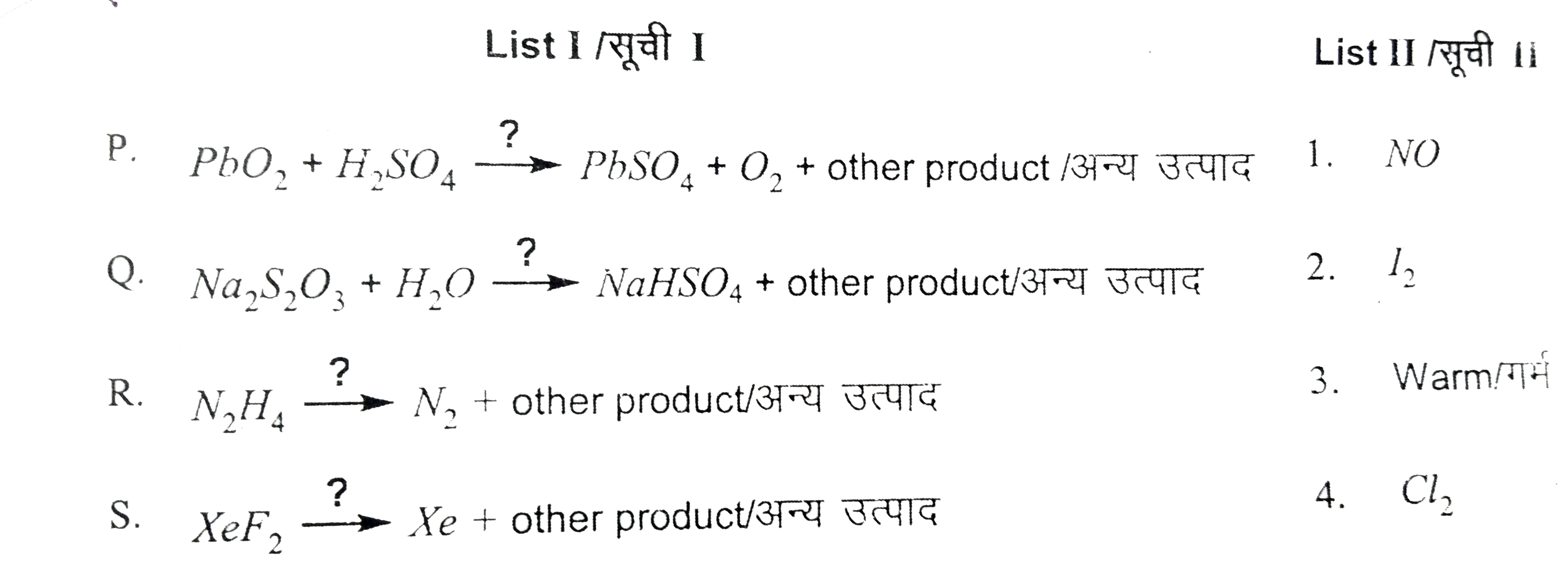Nitrobenzene is a versatile compound that may be converted into a wide variety of substituted benzenes. Five such synthesis are shown below. In each reaction box above an arrow write letters designating the reagents and conditions, selected from the list at the bottom of the page, that would effect the transformation. The reagents must be written in the answer box in the correct order of their use. You may assume appropriate heating or cooling takes place, and more than one equivalent of the reagent may be used if needed.
 Solution in Telugu
Solution in Telugu
v-F, A, D, B, w-A, H, I, G, D, C, x - A, E, D, y-F, I, A or I, F, A, Z-A, , x-A, H, I, F, G, A or A, H, I, F, A, G
Topper's Solved these Questions
- AROMATIC COMPOUNDS BOOK - MS CHOUHANCHAPTER - AROMATIC COMPOUNDS EXERCISE - LEVEL-2 (SUBJECTIVE PROBLEMS)
3 Videos
- AROMATIC COMPOUNDS BOOK - MS CHOUHANCHAPTER - AROMATIC COMPOUNDS EXERCISE - LEVEL-2
11 Videos
- AMINESBOOK - MS CHOUHANCHAPTER - AMINESEXERCISE - Level-2
1 Videos
- BIOMOLECULES BOOK - MS CHOUHANCHAPTER - BIOMOLECULES EXERCISE - LEVEL - 2
5 Videos
Similar Questions

Double bond equivalent of D is :
View SolutionEach of the six compounds shown at the bottom of the page has two aromatic (benzene) rings. In each case the two rings are different and are labeled A & B. If an electrophilic substitution, such as nitration or bromination, is carried out on each compound, then identify which ring (A or B) will be preferentially attacked, and indicate the orientation of the substitution (ortho/para, meta or all sites).

View SolutionFive amine syntheses are outlined below. In each reaction box enter a single letter designating the best reagent and conditions selected from the list at the bottom of the page.


View SolutionMatch the colume (I) and Column (II). (Matrix)

View Solution In each reagent box write a letter designating the best reagent and condition selected from the above list of reagents.
In each reagent box write a letter designating the best reagent and condition selected from the above list of reagents.

View SolutionPropene (CH_(3)-CH=CH_(2)) can be transformed to compounds (a to j) listed in the left-hand column. Write letter designating the reagent, you believe desired transformation. In the case of multi-step sequence write the reagent in the order they are to be used.
View SolutionIn each reaction box write a single letter designating the best reagent and condition selected from the list at bottom of the page.


View SolutionNitrobenzene is a versatile compound that may be converted inot a wide variety of subsituted benzenes. Five such synthesis are shown below. In each reaction box above an arrow write letters designating the reagents and conditions, selected from the list at the bottom of the page, that would effect the transformation. The reagents must be written in the answer box in the correct order of their use. You may assume appropriate heating or cooling takes place, and more than one equivalent of the reagent may be used if needed.

ReagentsReagentsAH2,NicatalystFCl2 & FeCl3BKBr & Cu2Br2GNaOH10% solutionCKCN & Cu2(CN)2H(CH3CO)2O, pyridineDHNO20∘CIHNO3/H2SO4ECH3I & pyridine
View SolutionIsobuty alcohol (2 -mehyl 1 -1-propanol), (CH_(3))_(2)CHCH_(2)OH, can be transformed to each of the compounds (a through 1) listed in the left-hand column. In each case the number of steps the needed to accomplish the change is noted, and an answer box is noted, and answer box is provided for your reagent selections. Fourteen reagents (designated A through N) are listen in the right -hand column. corresponding to the desired compound. Write letters desiganating the raagent or reagents you believe will achieve the desired transformation in the box to the right of the product formula. In the case of a multi-step sequence write the reagents in the order they are to be used. In some cases you may wish to use a previously prepared compound as a reactant. If so, write the number (a to 1) corresponding to the desired compound.
View SolutionMatch list I (reaction) with list II (Reagent) and select the correct answer using the codes given below :

View SolutionThe unbalanced chemical reactions given In list I show missing reagent or condition (?) Which are provided in List II. Match List I with List II and select the correct answer using the code given below the list:
View SolutionThe unbalanced chemical reactions given in List I show missing reagent or condition (?) which are provided in List II. Match List I with List II and select the correct answer using the code given below the lists:

View SolutionMatch list I (reagents for reaction of nitrobenzene) with list II (products formed and select the correct answer using the codes given below .
View SolutionWrite the best reagents above each reaction arrow. If the transformation cannot be achieved in a single step by any reagents, write "NR"

View SolutionWrite the best reagents above each reaction arrow. If the transformation cannot be achieved in a single step by any reagents, write "NR"
View SolutionWrite the best reagents above each reaction arrow. If the transformation cannot be achieved in a single step by any reagents, write "NR"
View Solution
